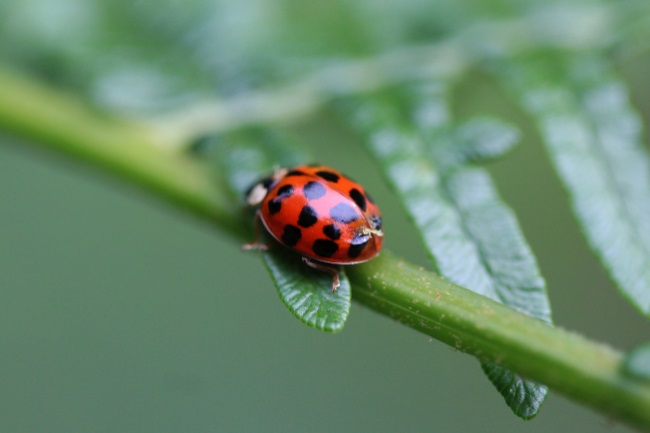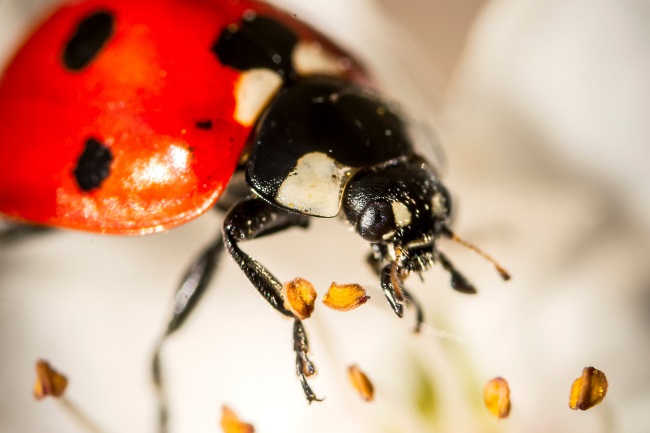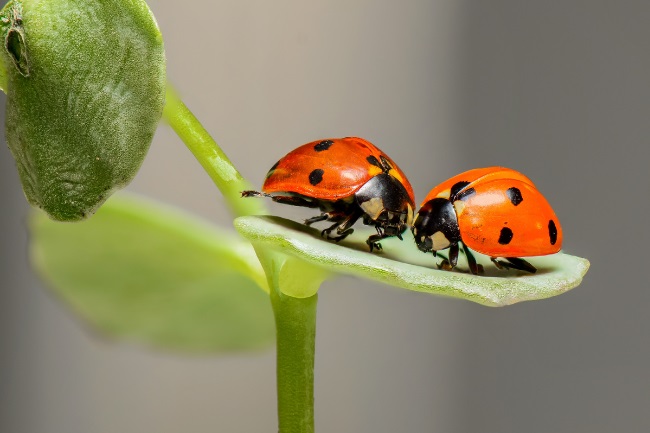Ladybugs are wonderful insects, which provide a great deal of joy to those that get to spend time watching them. Here are the top six reasons why you should love ladybugs.
Contents
What is a ladybug?

While we tend to think of the typical red and black little beetle when we say the word ‘ladybug’, there are actually around 3,500 species globally. These insects come in a surprising range of colours, from red to yellow to black. Although many sport the classic pattern of black spots, some come in stripes, others have a chequered pattern, and perhaps most surprising, some are entirely plain. So why do we have to be thankful for these little creepy crawlies?
| Ecological Role | Description |
|---|---|
| Biological Control | Ladybugs act as natural predators, helping to control pest populations and maintain ecological balance. |
| Food Source | Ladybugs serve as an essential food source for other insects, birds, and small mammals in the ecosystem. |
| Biodiversity Indicator | The presence of ladybugs indicates a healthy and diverse ecosystem, as they are sensitive to environmental changes. |
| Natural Pest Management | Ladybugs provide an eco-friendly alternative to chemical pesticides, promoting sustainable pest management. |
What are ladybugs good for?
Aphid control
What ladybirds are most famed for is their control of aphids, and they certainly deserve their reputation, with a single ladybug polishing off 50 aphids a day without breaking a sweat. Yet it’s not just aphids these little beetles will take care of. In fact, they will feast on all kinds of pests. From mealey bugs to scale insects to spider mites, ladybugs love them all. Amazingly, despite their diversity, around 90% of ladybugs will feast on these types of insects.
It’s for this reason that gardeners try to encourage ladybugs into their gardens, as these handy guests can save drooping roses and unhappy sweet peas from a vicious attack.
Also read:
Do Ladybugs Eat Plants? (Explained)
How to Attract Ladybugs to Your Garden? (Gardener’s Friends)
Reduction in pesticides
The overuse of pesticides has had a considerable impact on the wildlife within our countryside. Pesticides can be used to kill off unwanted weeds within the crops or stop hungry mouths from taking a bite out of valuable harvests. However, most cannot differentiate between an unwanted weed and a wildflower (most weeds are wildflowers). Neither can they largely select one insect over another, meaning that non-pest species are hit just as hard.
The large-scale use of pesticides has therefore slowly chipped away at the biodiversity of our countryside, with more and more species succumbing to the repeated hits. However, many farmers have been looking at more natural alternatives without the negative repercussions. Introducing natural predators can help to get rid of pests without harming other wildlife. Ladybugs are an excellent control for many pest species, such as aphids.
Encouraging wild places in our farmland
To use ladybugs for pest control, they can be brought in and released. However, a far more natural way to get ladybugs to use the farmland is to provide a ladybug bed and breakfast. This means creating natural habitats within the landscape that the ladybugs can thrive within, such as hedgerows and wildflower margins.
Many farms have removed such features in the past as they were not seen as having any value. However, studies are now showing these areas can help create a more natural ecosystem, encouraging a whole range of helpful insects, from pollinating butterflies to predatory beetles.

As the usefulness of ladybugs is so well-known, they have acted as ambassadors for other less sympathetic insects, encouraging landowners to add natural features back into their landscapes.
Pollination
Now a ladybug is not as good a pollinator as a bee, but it is a pollinator none the less. Ladybugs mostly eat meat. However, most species will also help themselves to a little bit of pollen as well. This addition to their diets probably helps to give them beneficial minerals that they would otherwise be missing. By moving from plant to plant, remnants of the pollen they’ve been feeding on stuck to their exoskeleton; they are doing their little bit for pollination.
| Plant Species | Ladybug Species | Pollination Role |
|---|---|---|
| Wildflowers | Hippodamia convergens, Coccinella novemnotata | Help pollinate wildflower species, contributing to biodiversity. |
| Vegetable Crops | Harmonia axyridis, Coccinella septempunctata | Aid in pollination of vegetable plants, leading to higher yields. |
| Fruit Trees | Coccinella septempunctata, Adalia bipunctata | Assist in pollinating flowers of fruit-bearing trees, ensuring fruit production. |
Connecting people with nature
Perhaps one of the greatest things the ladybug does is to connect people with nature. Let’s face it; most people aren’t going to get up close to a spider, and probably not a moth or a beetle either. Butterflies are lovely, but they so rarely pause and certainly aren’t going to wait around for you to pick them up. Ladybugs, with their slow way, allow children and adults to let them wander from a leaf onto a finger and will graciously hang around long enough for you to take a good look too.

Luckily their tough exoskeleton also means they can come off from this encounter unscathed. Their bright colours, and the fact they are so often found in the places where we spend much of our time, such as gardens and public parks, means we get to interact with them a great deal. This is important because the more we interact with nature, the more we care for it, and the more we want to protect it.
Inspiring art
Another aspect of ladybugs is their habit of acting as muses to us uninspired mortals. Over the centuries, they have given rise to a great deal of art. From poetry to paintings or outfits, the ladybug’s beautiful cloak can be seen wherever you go. In this way, these beetles have given a great deal of happiness, entertainment, and even financial reward, to many of their human observers.
The wonders of the ladybugs
So there are plenty of reasons why you should let ladybugs into your life. And once you’re familiar with the ladybugs in your backyard, the great news is that you’ve got over 3,500 more to get to know.

